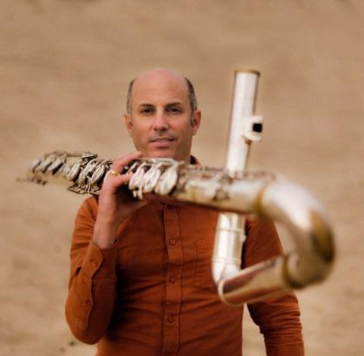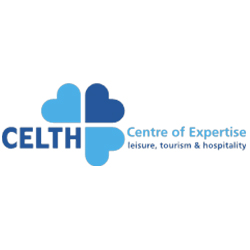Deze publicatie richt zich vooral op het concept Design Based Research,gezien vanuit het perspectief van de bijna 40 lectoren die de hogeschool rijk is. Dit lectoratenoverzicht kan worden beschouwd als een atlas of reisgids waarmee de lezer een route kan afleggen langs de verschillende lectoraten. De lectoraten die actief zijn op het gebied van de Service Economy worden beschreven in hoofdstuk 2. De lectoraten die actief zijn op het gebied van Vitale Regio worden beschreven in hoofdstuk 3. De lectoraten die actief zijn op het gebied van Smart Sustainable Industries worden beschreven in hoofdstuk 4. De lectoraten die actief zijn op het gebied van de hogeschoolbrede thema’s Design Based Education en Research worden beschreven in hoofdstuk 5. Tenslotte wordt er in hoofdstuk 6 een eerste aanzet gedaan om één of meer verbindende thema’s of werkwijzen te ontdekken in de aanpak van de verschillende lectoraten. Het is niet de bedoeling van deze publicatie om een definitief antwoord te geven op de vraag wat NHL Stenden precies bedoelt met het concept Design Based Research. Het doel van deze publicatie is wel om een indruk te krijgen van wat er allemaal gebeurt binnnen de lectoraten van NHL Stenden, en om nieuwsgierig te worden naar meer.
DOCUMENT

Boek te leen bij de HU Bibliotheek Arts-Based Research betekent letterlijk: op kunsten gebaseerd onderzoek. Praktijkgericht Arts-Based Research levert een bijdrage aan het oplossen van concrete vraagstukken in de dagelijkse beroepspraktijk. Juist in het sociaal domein heeft het toegevoegde waarde dit type onderzoek in te zetten omdat deze benadering de ruimte biedt de praktijk in het sociaal domein vanuit een ander perspectief te bekijken en te komen tot activering, ondersteuning, verbinding en participatie. In Arts-Based Research voor het sociaal domein komen verschillende kunstvormen aan bod. De auteurs laten zien hoe die gebruikt kunnen worden in innovatief praktijkgericht onderzoek in alle fasen van een onderzoeksproject. De uitgave begint met een introductie van Arts-Based Research. Daarin wordt onder andere ingegaan op vraagstukken in het sociaal domein die zich goed lenen voor het werken met kunst in onderzoek. In het kerngedeelte wordt ingegaan op zes varianten van Arts-Based Research, gekoppeld aan even zo veel kunstvormen: verhalen, muziek, theater, dans, beeldende kunst en audiovisuele media.
LINK
Imagery Rehearsal Therapy (IRT) is effective for trauma-related nightmares and is also a challenge to patients in finding access to their traumatic memories, because these are saved in non-verbal, visual, or audiovisual language. Art therapy (AT) is an experiential treatment that addresses images rather than words. This study investigates the possibility of an IRT-AT combination. Systematic literature review and field research was conducted, and the integration of theoretical and practice-based knowledge resulted in a framework for Imagery Rehearsal-based Art Therapy (IR-AT). The added value of AT in IRT appears to be more readily gaining access to traumatic experiences, living through feelings, and breaking through avoidance. Exposure and re-scripting take place more indirectly, experientially and sometimes in a playlike manner using art assignments and materials. In the artwork, imagination, play and fantasy offer creative space to stop the vicious circle of nightmares by changing theme, story line, ending, or any part of the dream into a more positive and acceptable one. IR-AT emerges as a promising method for treatment, and could be especially useful for patients who benefit least from verbal exposure techniques. This description of IR-AT offers a base for further research.
DOCUMENT

Students in Higher Music Education (HME) are not facilitated to develop both their artistic and academic musical competences. Conservatoires (professional education, or ‘HBO’) traditionally foster the development of musical craftsmanship, while university musicology departments (academic education, or ‘WO’) promote broader perspectives on music’s place in society. All the while, music professionals are increasingly required to combine musical and scholarly knowledge. Indeed, musicianship is more than performance, and musicology more than reflection—a robust musical practice requires people who are versed in both domains. It’s time our education mirrors this blended profession. This proposal entails collaborative projects between a conservatory and a university in two cities where musical performance and musicology equally thrive: Amsterdam (Conservatory and University of Amsterdam) and Utrecht (HKU Utrechts Conservatorium and Utrecht University). Each project will pilot a joint program of study, combining existing modules with newly developed ones. The feasibility of joint degrees will be explored: a combined bachelor’s degree in Amsterdam; and a combined master’s degree in Utrecht. The full innovation process will be translated to a transferable infrastructural model. For 125 students it will fuse praxis-based musical knowledge and skills, practice-led research and academic training. Beyond this, the partners will also use the Comenius funds as a springboard for collaboration between the two cities to enrich their respective BA and MA programs. In the end, the programme will diversify the educational possibilities for students of music in the Netherlands, and thereby increase their professional opportunities in today’s job market.

Size measurement plays an essential role for micro-/nanoparticle characterization and property evaluation. Due to high costs, complex operation or resolution limit, conventional characterization techniques cannot satisfy the growing demand of routine size measurements in various industry sectors and research departments, e.g., pharmaceuticals, nanomaterials and food industry etc. Together with start-up SeeNano and other partners, we will develop a portable compact device to measure particle size based on particle-impact electrochemical sensing technology. The main task in this project is to extend the measurement range for particles with diameters ranging from 20 nm to 20 um and to validate this technology with realistic samples from various application areas. In this project a new electrode chip will be designed and fabricated. It will result in a workable prototype including new UMEs (ultra-micro electrode), showing that particle sizing can be achieved on a compact portable device with full measuring range. Following experimental testing with calibrated particles, a reliable calibration model will be built up for full range measurement. In a further step, samples from partners or potential customers will be tested on the device to evaluate the application feasibility. The results will be validated by high-resolution and mainstream sizing techniques such as scanning electron microscopy (SEM), dynamic light scattering (DLS) and Coulter counter.
Digital transformation has been recognized for its potential to contribute to sustainability goals. It requires companies to develop their Data Analytic Capability (DAC), defined as their ability to collect, manage and analyze data effectively. Despite the governmental efforts to promote digitalization, there seems to be a knowledge gap on how to proceed, with 37% of Dutch SMEs reporting a lack of knowledge, and 33% reporting a lack of support in developing DAC. Participants in the interviews that we organized preparing this proposal indicated a need for guidance on how to develop DAC within their organization given their unique context (e.g. age and experience of the workforce, presence of legacy systems, high daily workload, lack of knowledge of digitalization). While a lot of attention has been given to the technological aspects of DAC, the people, process, and organizational culture aspects are as important, requiring a comprehensive approach and thus a bundling of knowledge from different expertise. Therefore, the objective of this KIEM proposal is to identify organizational enablers and inhibitors of DAC through a series of interviews and case studies, and use these to formulate a preliminary roadmap to DAC. From a structure perspective, the objective of the KIEM proposal will be to explore and solidify the partnership between Breda University of Applied Sciences (BUas), Avans University of Applied Sciences (Avans), Logistics Community Brabant (LCB), van Berkel Logistics BV, Smink Group BV, and iValueImprovement BV. This partnership will be used to develop the preliminary roadmap and pre-test it using action methodology. The action research protocol and preliminary roadmap thereby developed in this KIEM project will form the basis for a subsequent RAAK proposal.
Centre of Expertise, part of Breda University of Applied Sciences, NHL Stenden Hogeschool, HZ University of Applied Sciences
